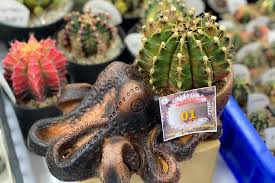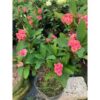Why the Color Blue Is Always Loved in Blue Willow China

The Blue Willow China pattern is one of the most iconic and enduring designs in the world of porcelain. Known for its delicate, intricate motifs of a romantic Chinese-inspired landscape, Blue Willow has been a symbol of timeless elegance and craftsmanship for centuries. But beyond its design and historical significance, there is one key element that sets it apart from other ceramic patterns: its distinctive blue color. The deep, rich blue hue that adorns the Blue Willow China pieces has played a crucial role in the pattern’s long-lasting popularity, captivating audiences worldwide for generations. In this article, we will explore why the color blue has become so beloved in Blue Willow China, from its historical significance and cultural associations to its aesthetic appeal and emotional impact.
1. The Symbolism of Blue in Culture and Art
The color blue has a rich history across many cultures and has long been associated with a variety of positive connotations. In many ancient cultures, blue was considered a color of the heavens, of divinity, and of nobility. In Egypt, blue was used to represent the eternal, often seen in the lapis lazuli stones that adorned pharaohs’ tombs and in the vibrant blue colors used in ancient art. Similarly, in Europe during the Renaissance, blue was the color of the Virgin Mary’s robes, symbolizing purity and devotion.
For Blue Willow China, the color blue carries with it centuries of symbolic weight. The use of blue in the design creates a sense of calm, serenity, and tranquility, which complements the peaceful, romantic nature of the motifs it is paired with, such as pagodas, willows, and birds. The color blue, with its deep associations with nature, spirituality, and peace, enhances the emotional appeal of Blue Willow China. The pairing of this rich color with delicate porcelain craftsmanship creates a visually striking effect that speaks to both the heart and the mind.
2. The Role of Blue in the Blue Willow Design
The Blue Willow pattern was created in the 18th century and is considered a fusion of Chinese-inspired motifs and European craftsmanship. The intricate blue-and-white design was influenced by Chinese porcelain, which was widely admired in Europe for its exquisite artistry and quality. At the time, Chinese porcelain was highly coveted, and European potters sought to replicate the aesthetic of Chinese ceramics while adapting it to their own styles.
The design typically features a romantic scene with a pagoda, willow tree, birds, and a river. The entire scene is outlined in bold blue, which not only highlights the intricate details but also brings the scene to life. The color blue is used to create a contrast against the white porcelain background, which helps the images stand out and makes the design feel more dynamic and engaging. In this way, the color blue plays a crucial role in creating the visual balance that has made Blue Willow such an iconic pattern.
3. Blue as a Universal Favorite Color
One of the reasons blue is so universally loved in Blue Willow China is its wide appeal across different cultures and demographics. Research has shown that blue is consistently ranked as one of the most favorite colors across the globe. It is a color that appeals to both men and women and has a broad cultural resonance. This universal popularity of blue makes it a versatile choice for design, ensuring that Blue Willow China has a wide range of admirers, from art collectors and antique enthusiasts to everyday buyers.
Blue is often described as a color that evokes feelings of calmness and relaxation, making it a favorite in interior design and decorative items. When incorporated into Blue Willow China, this soothing effect is enhanced, making it an ideal choice for tableware and home decor. Whether used as a plate, a teacup, or a decorative object, Blue Willow China with its signature blue coloring offers a sense of peace and tranquility to any room or occasion.
4. The Aesthetic Appeal of Blue
In addition to its cultural and symbolic significance, the color blue also holds strong aesthetic appeal. The deep blue hue used in Blue Willow China is particularly captivating due to its ability to complement the fine details of the pattern while standing out as a focal point. The blue color contrasts beautifully with the white porcelain background, making the design feel lively and full of movement.
This striking contrast creates an elegant and timeless look that appeals to many people, both past and present. The color blue itself is associated with elegance and sophistication, which explains why Blue Willow China has remained popular for centuries. The use of blue also ties the design to the traditions of European porcelain manufacturing, where blue-and-white ceramics were particularly prized for their refined aesthetic. The color blue, with its timeless beauty, continues to captivate collectors and enthusiasts, contributing to the enduring legacy of Blue Willow China.
5. The Emotional Connection to Blue Willow China
Blue is often referred to as a “cool” color, known for its ability to evoke a sense of calm and serenity. When used in Blue Willow China, this emotional effect is enhanced, creating a sense of nostalgia, tranquility, and even romance. The soft blue tones of the design can evoke memories of past travels, special occasions, or family gatherings, making each Blue Willow piece a sentimental treasure.
Furthermore, the emotional connection to blue in Blue Willow China is often tied to the classic narrative depicted within the design itself. The romantic story between two lovers, symbolized by the couple on the design, is reflected through the serene and tranquil blue coloring. The blue color serves to enhance the emotional depth of the design, drawing viewers into the story of love, separation, and longing.
For many collectors, owning a piece of Blue Willow China is more than just about the aesthetic beauty; it is about preserving memories and creating new ones. The color blue plays a key role in this emotional connection, offering a sense of continuity and a lasting reminder of cherished moments.
6. Blue Willow China in Modern Trends
Despite its long history, Blue Willow China continues to be relevant in modern design trends. The appeal of the color blue has remained steadfast, and its use in Blue Willow China makes it a desirable addition to contemporary homes. The timeless design, combined with the universal love of blue, makes Blue Willow a popular choice in today’s market, whether for traditional home decor or for collectors seeking to add a touch of history to their modern spaces.
Moreover, the modern trend of incorporating vintage and antique items into interior design has fueled the resurgence of Blue Willow China. Designers and homeowners are increasingly looking for ways to blend old-world charm with modern sensibilities, and Blue Willow provides the perfect solution. The color blue, with its calming and serene qualities, fits seamlessly into modern interiors, where people seek to create spaces that promote relaxation and comfort.
7. The Enduring Legacy of Blue Willow
The lasting appeal of Blue Willow China is closely tied to its distinctive blue coloring. The color blue, with its deep cultural significance and aesthetic beauty, has helped to elevate the Blue Willow pattern to its status as one of the most iconic designs in porcelain history. Whether used as a decorative object, a piece of fine china, or a collectible, Blue Willow China continues to be cherished for its elegance, serenity, and timeless beauty.
The color blue has a unique ability to transcend time, place, and culture, which is why it remains beloved in Blue Willow China. As long as there is a demand for beautiful, meaningful, and emotionally resonant designs, Blue Willow China will continue to captivate hearts around the world, with its signature blue color leading the way.
Conclusion
Blue Willow China is much more than just a design pattern—it is a symbol of timeless elegance, craftsmanship, and cultural heritage. The color blue plays a pivotal role in the enduring appeal of Blue Willow China, with its deep associations with serenity, nobility, and beauty. The use of blue in the design enhances its emotional impact, making it a beloved choice for collectors and homeowners alike. Whether through its calming aesthetic, its cultural significance, or its emotional resonance, blue remains at the heart of Blue Willow China, ensuring its place in the world of fine porcelain for generations to come.

